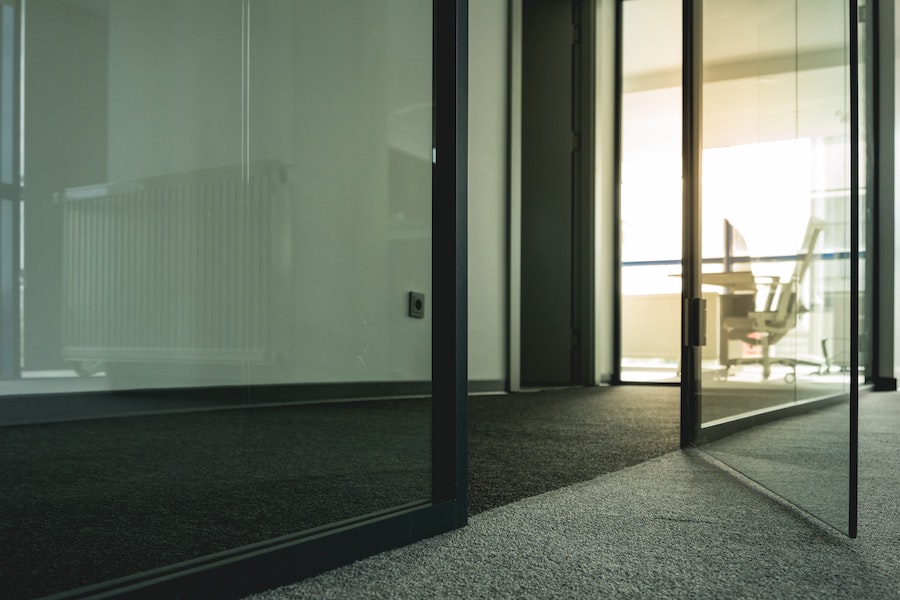If you’re a business owner, property owner, or building maintenance worker, it can be difficult to answer the age-old question: “When should carpet be replaced?”
It’s easy to postpone something like a new carpet installation, as it seems like a low-priority issue. However, this decision can actually impact your workplace productivity.
We know how hard it is to balance budget and maintenance costs with the aesthetics of your space, but now is the perfect time to start thinking about this. With the new year right around the corner, there’s room for improvement (from the ground up).
We’ve compiled this helpful guide, so you can know for sure when carpet should be replaced in your business.
Let’s dive in.
When Should Carpet Be Replaced?
The first signs that your commercial carpet may need replacing are obvious.
- Are there any physical damages like snags or tears?
- Does your carpet look faded or worn in certain areas that receive a lot of traffic?
- Do you see stains or discoloration that won’t come out no matter how much you clean them?
If you answered yes to any of these questions, it might be time for a change.
Below, we’ve outlined some of the obvious (and not-so-obvious) signs to watch for in your workplace.
Sign #1: Visible Wear & Tear
One way to tell if you need new commercial flooring is to examine the current state of your carpets. Are they looking faded or worn down? Are there any visible stains or discoloration?
Coffee spills in the workplace are pretty common and easy to spot, but oftentimes, they’re more difficult to remove.
If you’ve begun to notice visible wear and tear, you might already have your answer to the most important question: “When should the carpet be replaced?”
Sign #2: Unpleasant Smells
If you notice a persistent smell, even after cleaning, then it may be time to replace your carpet.
This could indicate that dirt and dust have built up over time and needs replacing. Not to mention, the age of your carpet should factor in. With proper care, commercial carpets can last up to 15 years, but that is not always the case.
Unpleasant odors that remain even after cleaning can indicate your carpets have reached the end of their lifespan.
But what about the less obvious signs?
If you have employees, ask yourself if they seem uncomfortable in the office space. Does their productivity dip during work hours? Do they complain about allergies? These could all be indicators that your carpet needs replacing because it is negatively impacting the health of your staff.
Sign #3: Allergy Symptoms
If employees or customers have been complaining of allergy symptoms such as sneezing or coughing in certain areas that are carpeted, you should make a note.
This could mean that dirt and dust have accumulated in the carpets over time and are causing allergic reactions. It might be best to consider replacing them with newer materials.
Sign #4: Loss of Comfort
Are people walking or standing on your carpets feeling uncomfortable after long periods of time?
The cushioning of carpet can fade over time, especially in high-traffic areas. And less cushioning means less comfortable for people who sit and stand on the carpet for hours each day.
This employee or client feedback can indicate that it’s time for an upgrade.
(It could also just mean that they need a good cleaning, but if they’re still not up to par after cleaning, replacing them may be necessary.)
Sign #5: Unsafe Conditions
Has anyone slipped or tripped on any part of your carpet recently?
This can happen if the carpets have become too worn down and unsafe, creating legal issues for your business if someone gets injured due to dangerous conditions.
You don’t want loose threads, carpets peeling, or uneven surfaces impacting the safety of a workplace when these issues can be easily remedied with a carpet refresh.
Are New Commercial Carpets Worth the Cost?
It can be challenging to determine when should carpet be replaced, but your decision could actually pay off in the long run.
Consider comparing installation costs with repair costs; oftentimes, installing new carpets can be more cost-effective in the long run than attempting repairs. Plus, with new carpets comes improved air quality and increased productivity among employees—so don’t forget to factor those added benefits into your decision!
Making the decision of when and how to replace commercial carpets can be tough but we hope this guide has helped make it easier!
Keep these signs in mind so you can know exactly when it’s time for a change—and don’t forget to consider all aspects of cost, comfortability, and health when making your decision.
If you’re leaning toward a commercial carpet replacement, our team at Element Contract would be happy to help you with the process. Get in touch today!
